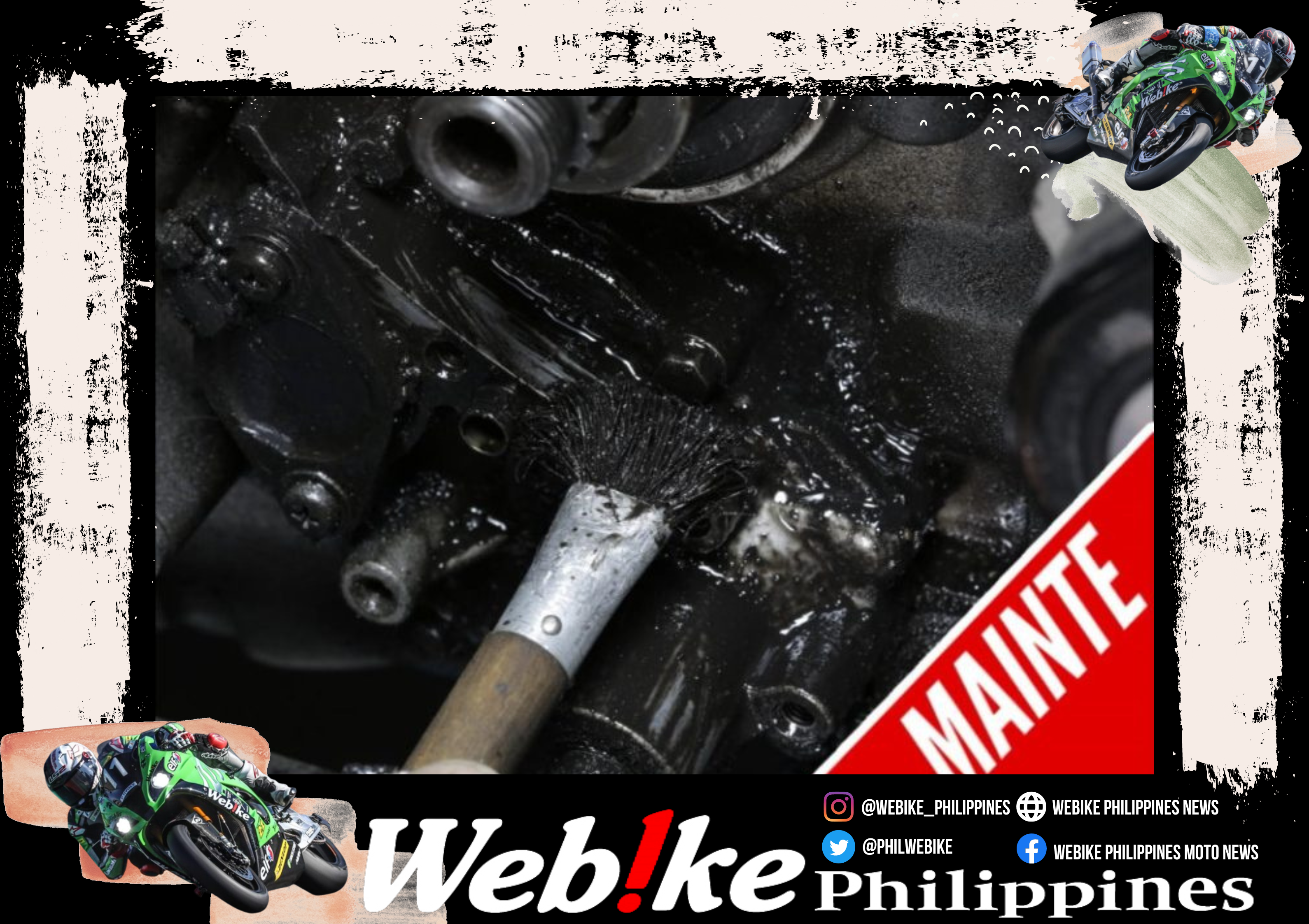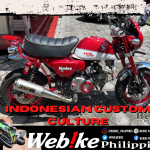Many riders know that the basics of drive chain maintenance include diligent cleaning and lubrication. However, when lubricating the chain lube, how many of us pay attention to the drive sprocket, which is covered by a cover? However, it is necessary to be careful because splashed oil can cause problems if left untreated.
Dirt that has accumulated in unseen areas can wrap around gravel and damage the lip of the oil seal.

The drive sprocket cover is not just a cover but is often part of the engine design. During maintenance, it is common practice to wipe off the dirt from the drive chain and driven sprocket with chain cleaner and a rag, but few riders clean the inside of the drive sprocket cover as well.

In the case of the Kawasaki W650 shown in the image, the clutch release and non-contact speed sensor are set inside the drive sprocket cover. Dirt from the chain lube will scatter to the outside of the rotating chain, and after a long time with increased mileage, it will also adhere to the clutch release and speed sensor.

While mildly dirty parts can be cleaned with the gas pressure of parts cleaner, it is more effective to wipe off the tough accumulated dirt with a rag or brush. Especially on models like this W650, where the clutch release and speed sensor brackets are mounted on top of the sprocket, those parts must be removed before the sprocket for thorough cleaning. To prevent the sprocket nut from turning around, it is best to use a wide tug to raise the sprocket nut.

While removing the sprocket, check the condition of the blade wear. Some sprockets are equipped with an OEM rubber damper to prevent noise, but if they are older, they may crack and fall off due to age-related deterioration, even if the mileage is low.
Whether non-seal or sealed, you know that regular cleaning and lubrication will extend the life of the drive chain, as stated on the chain manufacturer's official website. Some say that sealed chains do not need lubrication because grease is sealed between the pins and bushings, but if this were true, there would be no need for chain manufacturers to promote the need for lubrication
In sealed chains, grease is sealed in the contact area between the pin and bushing, which is the main cause of chain elongation, but there is no lubricant on the rollers that come in contact with the sprocket teeth or on the contact area between the rollers and bushing. Therefore, lubrication of the chain lubrication is necessary to lubricate the rollers and bushings, the rollers and sprockets, and the contact areas between the O-rings and plates.
When spraying spray-type chain lubes, it is important to clean them beforehand with chain cleaner. While chain lube helps lubricate the chain, the high-viscosity oil can cause debris and grit to cling to the chain.
Spraying new lube over dirty chain lube will smooth the chain immediately after application, but it will coat it with dirt.
If the dirt adheres to the contact surfaces of the sprockets and rollers, it can act like a file and cause wear. That's the whole point, so it is important to clean the dirt with a cleaner before lubricating.
In this series of chain maintenance procedures, the drive sprocket is often overlooked. While the rear tire side driven sprocket is often exposed on sports motorcycles, the drive sprocket on most motorcycles is covered by a sprocket cover bolted to the engine crankcase.
As the chain lube is sprayed regularly, some of it contaminates the chain and drive sprocket and splashes onto the wheels and rims. It is an unavoidable contamination that accompanies lubrication, and naturally, it also adheres to the drive sprocket.
Sprocket covers are important not only because they are part of the engine design and prevent them from getting caught in the drive chain, but also because they serve as an effective cover for the stinky stuff, distracting the eye from the dirt on the drive sprockets.
Therefore, when the sprocket cover is removed, such as when replacing the drive sprocket, it is not uncommon to be surprised to find chain rubs that have accumulated in the cohesive layers. On trail models that travel on forest roads, etc., the chain may be entangled with tangled grass. There have even been unbelievable cases where the sprocket cover was removed because of the sound of something rubbing against it all the time while driving, and a twig was caught in the sprocket cover.
POINT
Point 1 - Chain lube sprayed on the drive chain scatters and accumulates in the drive sprocket cover
Point 2 - Dust and grit can act like an abrasive if the chain lube in the drive sprocket cover is not cleaned
Once in a while, remove the drive sprocket cover to remove the clay-like hardened chain lube and clean it!

Lubricating spray or kerosene is more effective than parts cleaner in removing oil stains that are as sticky as clay. The key is to allow the oil to penetrate.

Scrape off any oil stains that have been penetrated by lubricating spray or kerosene with a toothbrush or cleaning brush. Be careful not to push dirt into the lip of the oil seal, and work carefully so that no debris or dirt remains around the oil seal when rinsing with parts cleaner.

If the driveshaft collar can be easily pulled off, check the condition of the contact area with the lip of the oil seal.
If there are linear grooves along the contact area, the oil seal may be less airtight and cause oil leakage. Also, if the engine oil is already leaking and there are linear marks on the collar, replacing the oil seal may not be enough to stop the leakage and seepage.
Not only does it not feel good to have sticky and dirty sprockets and crankcases, but sandy chain lubes can damage the drive shaft and change shaft oil seals, causing engine oil leaks.
As mentioned earlier, dirty chain lubes can take up dust and grit and become like a file, but when dirty chain lubes get on the oil seal like abrasive on the drive shaft (or the collar that goes through the shaft) or change shaft, they can scrape not only the rubber oil seal lip but also the metal collar and shaft that the seal is touching.
When removing the collar of a motorcycle with high mileage, the contact area of the seal lip may be worn in a linear pattern, which may be caused by dirty lubricating oil or grease on the contact area. This occurs not only around the drive sprocket but also in the dust seal on the rear wheel, but this also often occurs on the sprocket carrier side where chain lube sprayed onto the drive chain is dispersed.
The trouble with a broken oil seal on the drive sprocket or change shaft is that a broken lip can cause engine oil (or transmission oil in a 2-stroke motorcycle) to leak. Dirt from the chain lube mixed with seeping engine oil makes the inside of the drive sprocket cover even dirtier, and it becomes covered with a sticky deposit of what can neither be described as clay nor grease.
Cleaning is sufficient as long as the contamination is mild, but if oil leaks occur due to negligent maintenance, repairs are necessary. It would be a blessing in disguise if oil seal replacement is all that is needed, but if the collar or shaft is deeply damaged, it will take more time and cost more than replacing the seal.
Even if the oil seal is replaced, if the model uses a seal with a retaining rib around its circumference, the oil seal may not be removed without disassembling the crankcase, which could result in an irreversible situation if the chain lube is not wiped off.
To avoid such problems, it is essential, first and foremost, to prevent dirt from accumulating around the drive sprocket.
It is not practical to remove the drive sprocket cover every time the chain cleaner is used to clean the drive sprocket, but by cleaning the drive sprocket before dirt accumulates, depending on how often the chain lube is applied, the cleaning process can be less labor-intensive and effective in preventing damage to the oil seals. This is effective in preventing damage to the oil seals.
POINT
Point 1 - Chain lube with grit incorporated in the drive shaft and change shaft oil seals can cause lip damage
Point 2 - Chain lube dirt in the drive sprocket cover should also be cleaned regularly



